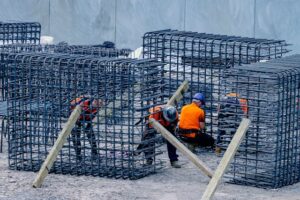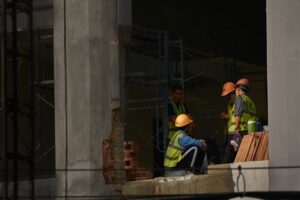Welcome to the exciting world of sustainable construction. In a time when environmental consciousness is at an all-time high, the building industry is stepping up its game with innovative practices that reduce our carbon footprint and create healthier spaces for us to live and work in. From green materials to energy-efficient systems, let’s delve into the latest advancements shaping the future of construction. However, with all these innovations, it will only be useful if there is enough construction staff to work on projects. If you want to know how it can affect the industry, visit https://ratgeber.blauarbeit.de/dienstleister/personalmangel-bau. So, buckle up as we explore how sustainability meets creativity in building design.
Green Building Materials
 When it comes to sustainable construction, the choice of materials plays an important role in reducing environmental impact. Green building materials are sourced responsibly, have minimal carbon footprint during production, and can be recycled or reused. One popular option is bamboo, known for its rapid growth and durability.
When it comes to sustainable construction, the choice of materials plays an important role in reducing environmental impact. Green building materials are sourced responsibly, have minimal carbon footprint during production, and can be recycled or reused. One popular option is bamboo, known for its rapid growth and durability.
Recycled steel is another eco-friendly alternative that helps reduce waste while providing structural strength. Additionally, using reclaimed wood adds character to a building and prevents deforestation. For insulation purposes, natural materials like cork and wool are gaining popularity for their thermal properties and renewable sourcing.
Passive Design Strategies
Passive design strategies are a game-changer in sustainable construction, harnessing the power of nature to create comfortable and energy-efficient buildings. By strategically placing windows to maximize natural light and ventilation, buildings can reduce their reliance on artificial lighting and HVAC systems. By using thermal mass materials like concrete or brick, it helps regulate indoor temperatures by absorbing and releasing heat slowly, reducing the need for heating or cooling. Additionally, proper insulation ensures that the building retains heat in winter and stays cool in summer without excessive energy consumption. Shading elements such as overhangs or louvers can prevent overheating during peak sunlight hours while allowing natural light to filter through. Coupled with efficient orientation based on the sun’s path throughout the day, passive design strategies optimize comfort levels while minimizing environmental impact.
Energy-Efficient Systems
Energy-efficient systems are revolutionizing the construction industry by significantly reducing energy consumption and lowering utility costs for building owners. These innovative technologies, from smart thermostats to solar panels, are designed to optimize energy usage while minimizing environmental impact. One of the key components of energy-efficient systems is advanced insulation materials that help regulate indoor temperatures and reduce the need for heating and cooling appliances. Also, high-performance windows with low emissivity coatings can prevent winter heat loss and minimize summer heat gain. Renewable energy sources like solar power are increasingly integrated into building designs to generate electricity on-site, further reducing reliance on traditional grid power. Energy recovery ventilation systems capture and reuse waste heat or cool air from exhaust streams to improve indoor air quality while conserving energy.
Green Roofs and Living Walls
 Green roofs and living walls are not just trendy design elements; they are vital in sustainable construction practices. Green roofs, covered with vegetation, help reduce heat absorption and provide insulation, lowering energy costs for buildings. They also improve air quality by capturing pollutants and greenhouse gases.
Green roofs and living walls are not just trendy design elements; they are vital in sustainable construction practices. Green roofs, covered with vegetation, help reduce heat absorption and provide insulation, lowering energy costs for buildings. They also improve air quality by capturing pollutants and greenhouse gases.
On the other hand, living walls are vertical gardens that offer both aesthetic appeal and environmental benefits. These structures can cool down buildings by shading them from direct sunlight and reducing the urban heat island effect. Living walls also promote biodiversity by providing habitats for insects and birds in urban areas.
By incorporating these latest innovations into construction projects, we can reduce our environmental impact and create healthier and more efficient buildings for generations to come. Embracing sustainability is not just a trend; it’s a vital step towards a greener and more sustainable future. Let’s continue to push the boundaries of sustainable construction practices and work towards creating a built environment that harmonizes with nature while meeting the needs of society. We can build a better world one eco-friendly structure at a time.
